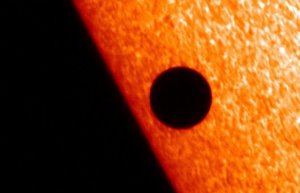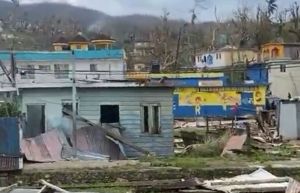There are secret planet killers out in space, such as near-Earth asteroids poised to attack Earth, but some are concealed in the Sun's glare. Because no telescope can see against the Sun's light, most are aimed away from the solar system's center.
However, this is where a planet killer can whiz by and destroy the Earth in a single devastating impact, killing all life and shattering the globe.
Near-Earth Asteroids Threaten Planets
Mankind now scans the sky for near-Earth objects (NEOs), including asteroids and any celestial body that is close to the Earth.
Technical resources have been used to learn more about the solar system and planet accretion, as well as to develop methods for tracking dangerous space debris, reported Science Alert.
Astronomer Scott Sheppard of Carnegie Institution for Science in Washington DC remarked that these NEOs are found between the expanse of the Earth and the Sun.
Sheppard wrote in Science Journal that more telescopes are trained on the Sun during twilight to avoid glare while searching for killer space rocks. These surveys have detected hidden near-earth asteroids in the inner Solar System.
One of the discoveries is one asteroid in an interior orbit to Venus called 'Ayló'chaxnim 2020 AV2. The asteroid with the shortest known orbital period around the Sun (named 2021 PH27)
While modeling anticipates that these hidden world killers should exist, telescopes with the Dark Energy Camera (DECam) attached, such as the Zwicky Transient Facility camera in California and the National Science Foundation's Blanco 4-meter telescope in Chile, are now beginning to locate them.
Read Also: Asteroid Alert: NASA Detects Four Asteroids Passing Earth's Orbit With One Closer Than Others
All space rocks get classified where they are, such as Atiras, an orbit interior to Earth, and Vatiras, an interior Venus orbit, and hypothetical Vulcanoids, an interior Mercury orbit.
Astronomers have concluded that craters on planets and moons show that NEOs are fairly common and have been impacting for several billion years with no abating, states IOP Science.
These cosmic bodies have had chaotic orbits in the last 10 billion years and have been unpredictable due to the Sun's impact. Also, these near-earth objects are constantly replaced by some unknown mechanism.
He explains that the motion of these space rocks is how they rotate, size, albedo, and distance from the Sun. Smaller space rocks absorb more sunlight and have broader movement.
These asteroid discoveries should help us understand their movement and how the number of NEOs has remained stable over such extended periods. Many of these NEOs are asteroids that have been loosened from the asteroid belt that lies in between Jupiter and Mars.
Inner Reservoirs of Near-Earth Objects
Sheppard remarked that these planet killers or NEOs have reservoirs that replenish the orbit of Atiras and Vatiras. It replaces and feeds asteroids that are orbiting into the Solar System, waiting to obliterate a world or fall into the solar mass and burn up.
Smaller asteroids are hard to find, but scientists speculate that 90% of planet killer NEOs sized about 1 kilometer or more have been accounted for. A few of them are unknown 1-km NEOs with close solar orbits or high inclination that are hard to detect in surveys.
These hidden world killers are near-earth asteroids orbiting where they cannot be seen. Due to the limitations of current science, these outer space threats are still out there.
© 2025 HNGN, All rights reserved. Do not reproduce without permission.








